Unlike 2020, where face-to-face interactions and handshakes sealed the deal, we adjusted and took a leap to create new Digital Marketing strategies and strengthen search engine optimization. This new year, focusing on telling an engaging story and earning our audience’s trust is still essential and important more than ever. Learning from the lessons we had from last year and the phrase “be flexible” has a whole new meaning now. Continuing to raise the bar and moving forward as Digital Marketers will always be our strength.
Top B2B Marketers Share their Content Marketing Predictions for 2021
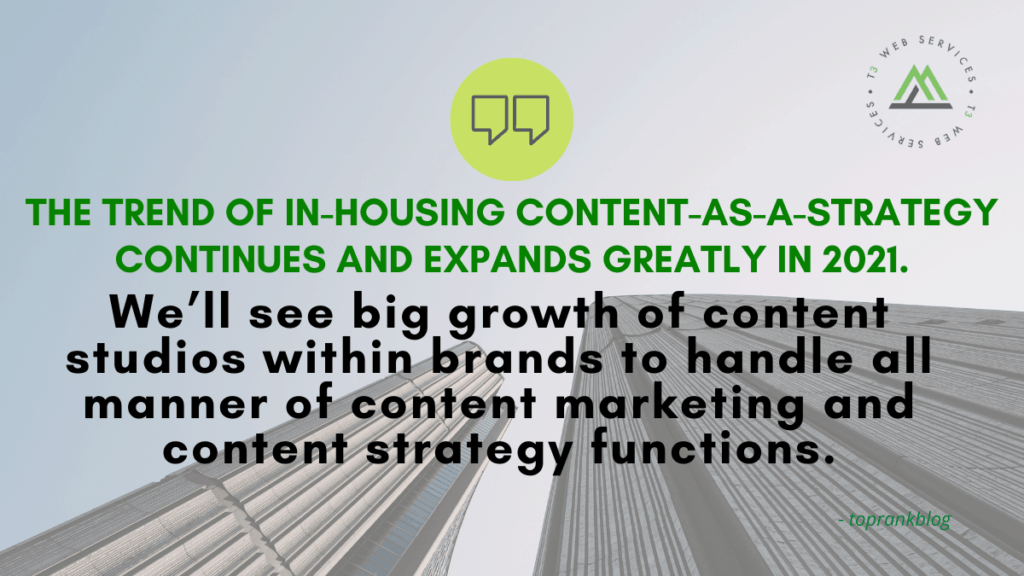

To help you gain some well-rounded insight, we reached out to several leading B2B content marketing experts and influencers with a firm grasp on the discipline and its ongoing evolution. Here are their predictions for 2021:
1 — Ardath Albee: “Interactive Content will Become a Mainstay”
I wrote recently here that digital experiences will be a top priority for content marketers in 2021. Veteran marketer Ardath Albee, who currently serves as interim VP of Marketing at Modus, also sees this as a pivotal frontier for content marketers:
“B2B has gone digital and it’s not going back. Buyers are relying on self-education more than ever. Engagement and experiences are critical for company growth. Interactive content will become a mainstay in Demand Gen and Sales Enablement programs in 2021 and beyond.
From virtual product tours to 3D virtual experiences, to value assessments and Digital Sales Rooms – marketers who want to facilitate the end-to-end buying experience with outcomes that prove contribution to revenue will increase focus on interactive content. They’ll up their game, moving beyond quizzes and surveys to content that resonates by getting buyers to actively pursue conversations with the companies that get them involved in what it takes to buy with confidence.”

https://www.toprankblog.com/2020/12/b2b-content-marketing-predictions-2021/
How to Optimize Facebook Ad Creative for Better Results


In this article, you’ll find tips to optimize your Facebook ad creative and copy to deliver better results and discover five tools to create effective video and image ad creative.
#1: Identify the Purpose of Your Facebook Ad Campaign
Before you choose what type of Facebook ad creative to use, think about the purpose of your campaign. Do you want to educate people and build an audience, or generate leads directly? Or perhaps you want to run a retargeting ad to encourage someone who’s already engaged to take the next step?
Regardless of the type of campaign, your creative will always be important. Creative stops the scroll and copy converts.
Now we’ll look at different types of Facebook video and image creative and when to use each type to get the best results from your ads.
#2: Tips to Optimize Facebook Video Ads
Let’s start with Facebook video ad creative. Video—whether a regular video, boomerang, or animated GIF—is one of my favorite types of Facebook ad creative.
If you go with regular video in your ad, educational videos are the best type to use for audience-building. Generally, you’ll want to use a horizontal video with a square canvas, colored background, large headline, and subtitles below the video. A square canvas will command more real estate in the Facebook feed, particularly when viewed on a mobile device.

https://www.socialmediaexaminer.com/how-to-optimize-facebook-ad-creative-for-better-results/
Trend Analysis: How to Understand Your Audience’s Search Behavior
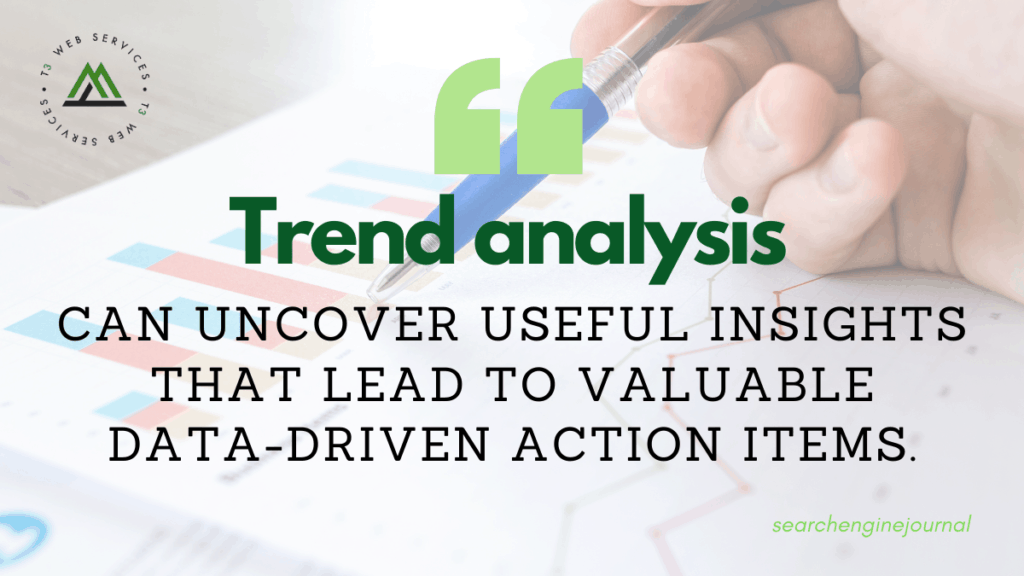

What Is “Trend Analysis”
Trend analysis is understanding fluctuations in users’ search interests and identifying emerging landscape search nuances
For the purpose of this walkthrough, let’s focus on “quarantine” and how the impact of the first quarantine (March 2020) may help predict users’ interests moving into the second quarantine.
Leverage Trend Analysis in Shifting Landscapes
If you don’t already know your typical search audiences’ interest seasonality, that’s where you’ll need to start.
The goal is to understand the change in typical search behavior caused by quarantine, so you will need to understand the difference between “usual” vs. “unusual” search.
If you need a refresher on how to identify “usual” search audience interest seasonality, check out Search Audiences & User Intent: SEO’s Secret Weapon and Top 10 Tools for Bulletproof SEO Content Strategies to understand the best way to leverage SEO tools for content strategies.
Once you have your baseline search audience profile, you can start to understand what’s changed and considered “unusual.”
Understand COVID-19 Impact on Search Audiences
COVID-19 presumably hit your search audiences the hardest with the widespread quarantine back in March 2020.
So, this is the next step in your investigation.
To quickly understand the differences between search interest over time, my “go-to” tool is always Google Trends (PS: it’s free!)
Let’s look at the search interest shifts for the way users spend their time in quarantine life.
The easiest assumption here is that your audience is spending more time at home and looking for things to do.
Let’s dig into Google Trends to confirm:
Search interest in “video games” peaked after widespread lockdown.

Turning Trend Insights Into Action Items
Now that you know the impacts of quarantine on your searchers, you can:
- Reactively service their current needs at the time of disruption.
- Proactively predict the needs that may result from future disruption.

https://www.searchenginejournal.com/trend-analysis-audience-search-behaviors/390673/
Outsourcing Digital Marketing? Here are the 10 Commandments for Your Success
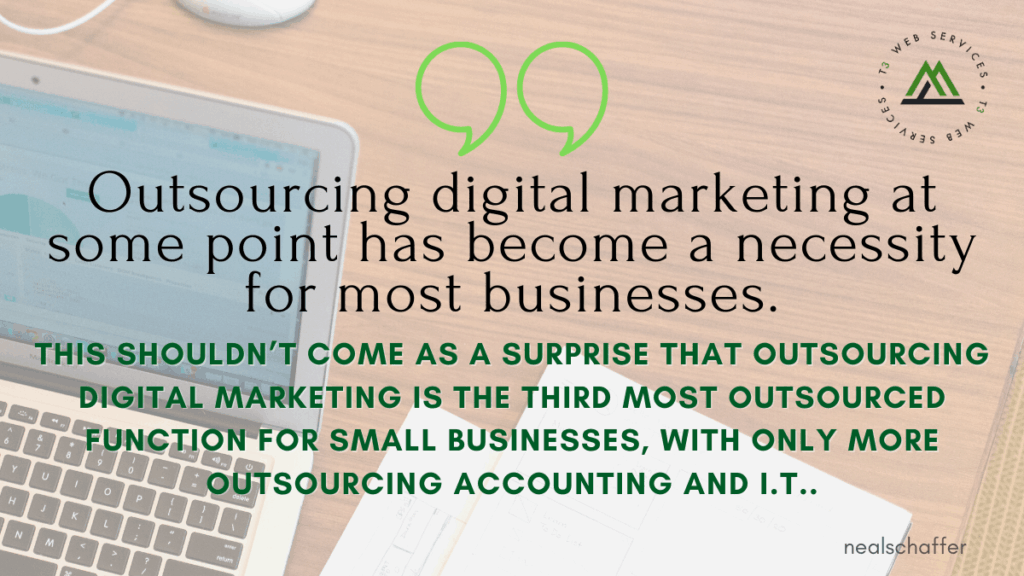

Bottom line: If you want to amplify your brand online, at some point you need or will need to employ a digital marketing agency that knows what they’re doing for any one or multiple of the tasks mentioned above.
1. Try Not to Skimp on the Budget
Outsourcing digital marketing means you are hiring a team of specialists, and compared to finding and hiring each expert individually, you are saving a LOT of money. That’s why you don’t want to go too aggressive on the budget and instead better value the approach to get the most value out of it.
2. Have a Strategy and Execute It to Perfection
A big part of any successful marketing campaign is being aware of changing consumer behavior and trends and there’s no better business to tell you this than a digital marketing agency. Use outdated SEO or black hat techniques, and your website will not rank well. Write cliché email subject lines and you’ll condemn your email marketing to spam folders.
Digital marketing agencies know this. Designing and executing campaign strategies isn’t something that’s done on the fly. They’re created by a group of learned marketers with specialised knowledge who spend hour upon hour in a boardroom. Then they’re executed to perfection.

https://nealschaffer.com/outsourcing-digital-marketing/
How to Use Instagram’s Most Popular Features to Repurpose Your Content
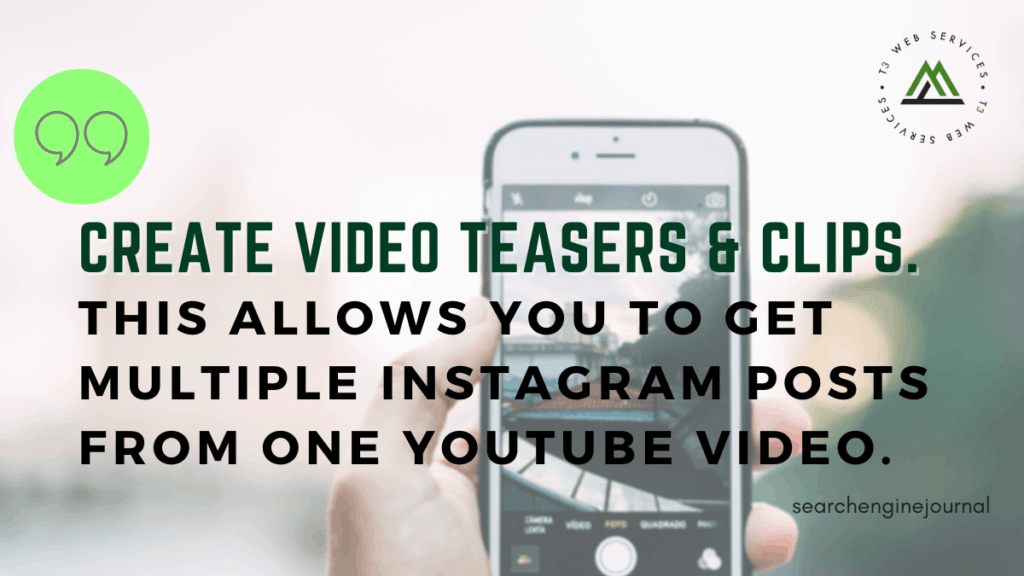

Between the latest features added to the platform and the user trends they’ve enabled, it’s never been easier to come up with an Instagram marketing strategy for a “non-visual” brand.
This is especially the case when you’re already creating content for other channels since some of the most popular and engaging trends right now are perfect for repurposing content.
1. Summarize Long-Form Content in Instagram Carousels
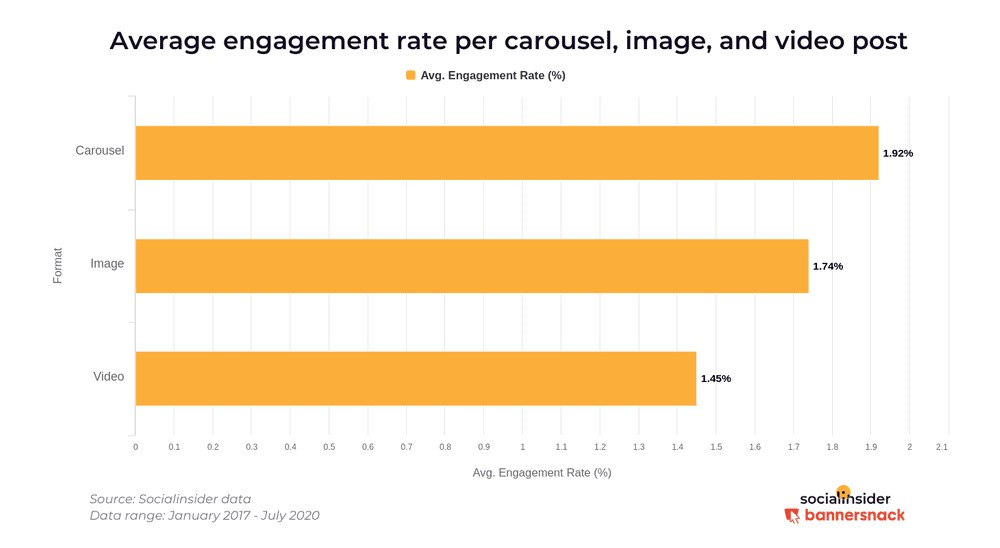
Carousels are a perfect way to share longer-form written content you’ve created for other platforms, like blog posts, podcast show notes, ebooks, and emails.
How you would want to go about this depends on whether you’re creating native-only content, or trying to also drive people to the original content.
If you’re creating a native-only carousel for Instagram, you can summarize each section of the longer form content in 1-2 slides each, and use the caption to introduce it all and get people hooked enough to swipe through.
Then, on the last side, use a CTA to drive engagement like comments, shares, and saves.
2. Curate a Series of Posts Into an Instagram Guide
Another way to take advantage of longer-form written content is by curating Instagram Guides.
Guides let you collect your past posts into a scrollable sequence to share on its own. They have shareable URLs, can be shared to stories and the feed, and live in a dedicated tab on user profiles.
So now when you break down each blog post section into its own Instagram caption, you can use this feature to roll them back up again. This lets users easily get the whole story or piece of content without leaving the platform.

https://www.searchenginejournal.com/repurpose-content-instagram/389822/?ver=389822X3#close
Google algorithms vs Google penalties, explained by an ex-Googler
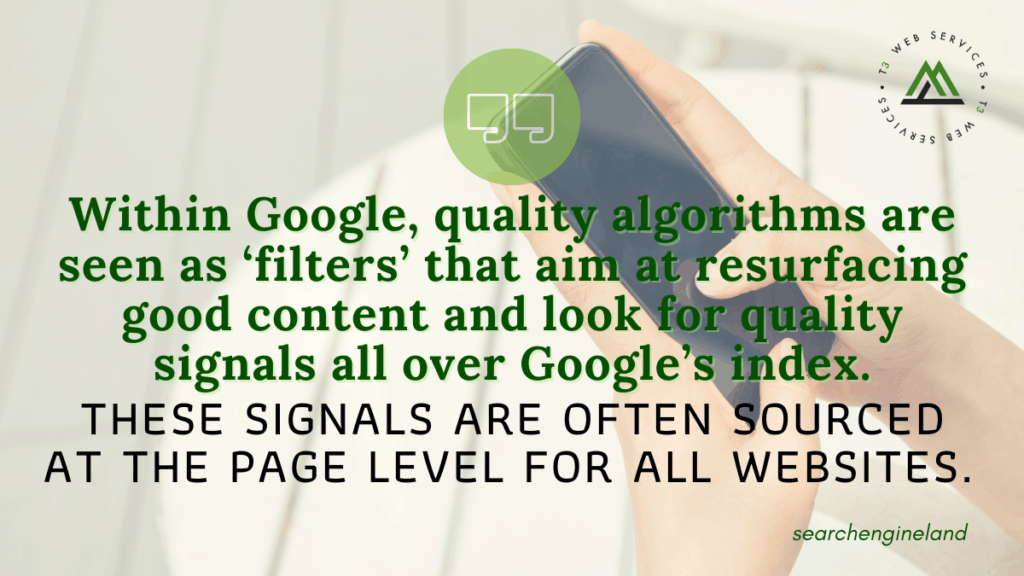

This former Google quality analyst explains the difference between Google’s algorithms, manual actions, quality and penalties.
It doesn’t come as a surprise, the fact that everyone with a web presence, usually holds their breath whenever Google decides to push changes into its organic search results. Being mostly a software engineering company, Google aims to solve all of its problems at scale. And, let’s be honest… It’s practically impossible to solve the issues Google needs to solve solely with human intervention.
Disclaimer: What follows derives from my knowledge and understanding of Google during my tenure between 2006 and 2011. Assume things might change at a reasonably fast pace, and that my perception may, at this stage, be outdated.
Google quality algorithms
In layman’s terms, algorithms are like recipes — a step-by-step set of instructions in a particular order that aim to complete a specific task or solve a problem.
The likelihood for an algorithm to produce the expected result, is indirectly proportional to the complexity of the task it needs to complete. So, more often than not, it’s better to have multiple (small) algorithms that solve a (big) complex problem—breaking it down into simple sub-tasks—, rather than a giant single algorithm that tries to cover all possibilities.
As long as there’s an input, an algorithm will work tirelessly, outputting what it was programmed to do. The scale at which it operates, depends only on available resources, like storage, processing power, memory, etc.
These are quality algorithms, which are often not part of infrastructure. There are infrastructure algorithms too, that make decisions on how content is crawled and gets stored, for example. Most search engines apply quality algorithms only at the moment of serving search results. Meaning, results are only assessed qualitatively, upon serving.

https://searchengineland.com/google-algorithms-vs-google-penalties-explained-by-an-ex-googler-345011
3 Things You Must Know About SEO in 2021


1. Search Intent & Demand Are Fluid
It’s important to know that search intent and demand are fluid – and much more so than I previously thought.
Understanding searcher intent is a critical part of a successful SEO strategy as you need to have a fundamental understanding of the intent behind a search query in order to build a page that satisfies that intent.
If your page is the best match for the intent, Google will rank your page in their results, simple as that (although making your page the best match is a bit more complicated).
But what happens when a global pandemic changes the search intent for a query?
Well, you either adapt or lose rankings.
For example, Lily Ray of Path Interactive shared a study where she saw queries like [Alcoholics Anonymous] and [Alcoholics Anonymous Meetings] returning websites like AA-Intergroup and In the Rooms which offer virtual recovery meetings and resources.
This demonstrates how quickly Google can adjust their results to match intent for people in quarantine who needed virtual recovery support, even without including “virtual” or “online” in their search query.
And shifts in searcher intent aren’t the only ways searcher behavior can change.
There’s also the potential that search volume and interest in a given query could explode or disappear almost overnight.

https://www.searchenginejournal.com/3-things-you-must-know-about-seo-in-2021/387697/


Leave a Reply